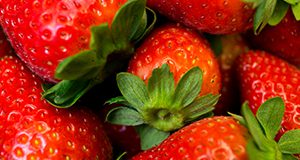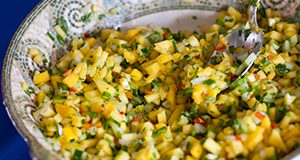Si usted no compra alimentos a menudo, probablemente debería comprar alimentos que duren hasta su próxima visita a la tienda. Para ayudarle a aprender que tanto comprar, aquí tenemos algunas guías para almacenar alimentos perecederos. This 2-page fact sheet is a major revision that provides food storage tips. Written by Jennifer Hillan and Linda B. Bobroff, and published by the UF/IFAS Department of Family, Youth and Community Sciences, revised July 2018.
https://edis.ifas.ufl.edu/fy700
Tag: Healthy Eating for Elders series
Healthy Eating: Improve Nutrition with SNAP
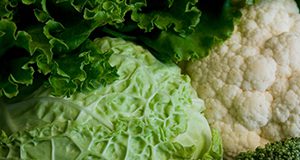 SNAP (the Supplemental Nutrition Assistance Program, formerly called Food Stamps) is one of several nutrition programs that help people meet their dietary needs. This 2-page fact sheet provides a brief overview of SNAP and examples of ingredients for healthy meals. Written by Linda B. Bobroff, and published by the UF Department of Family, Youth and Community Sciences, revised November 2016.
SNAP (the Supplemental Nutrition Assistance Program, formerly called Food Stamps) is one of several nutrition programs that help people meet their dietary needs. This 2-page fact sheet provides a brief overview of SNAP and examples of ingredients for healthy meals. Written by Linda B. Bobroff, and published by the UF Department of Family, Youth and Community Sciences, revised November 2016.
http://edis.ifas.ufl.edu/fy918
Healthy Eating: Meals Without Cooking
This 2-page fact sheet is a major revision featuring a fun word search and a delicious recipe that requires no cooking. Written by Linda B. Bobroff, and published by the UF Department of Family, Youth and Community Sciences, revised July 2016.
http://edis.ifas.ufl.edu/fy1215
Healthy Eating: Fluids
 More than one-half of an adult’s body weight is water. Water brings nutrients to the cells in our bodies and removes waste. Our bodies cannot function if they do not receive enough water. This 2-page fact sheet is a major revision that addresses the importance of water to physical functions, effects of dehydration, risk factors for dehydration in older adults, and fluid intake suggestions. Written by Linda B. Bobroff, and published by the UF Department of Family, Youth and Community Sciences, revised June 2016.
More than one-half of an adult’s body weight is water. Water brings nutrients to the cells in our bodies and removes waste. Our bodies cannot function if they do not receive enough water. This 2-page fact sheet is a major revision that addresses the importance of water to physical functions, effects of dehydration, risk factors for dehydration in older adults, and fluid intake suggestions. Written by Linda B. Bobroff, and published by the UF Department of Family, Youth and Community Sciences, revised June 2016.
http://edis.ifas.ufl.edu/fy070
Healthy Eating: Improving Your Convenience Foods
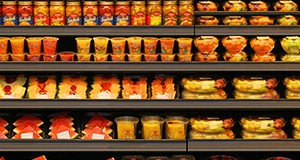 Convenience foods are foods that require little preparation. Some convenience foods only require heating and are ready to eat in less than five minutes! The majority of convenience foods are processed foods. However, precut, prewashed, frozen, and canned fruits and vegetables also can be classified as convenience foods. They are healthy foods but are usually more expensive than less prepared fresh fruits and vegetables. This 2-page fact sheet is a major revision that discusses pros and cons of convenience foods, improvement of nutritional quality, common convenience foods and easy additions, and additional tips. Written by Emily Minton and Linda B. Bobroff, and published by the UF Department of Family, Youth and Community Sciences, revised March 2016.
Convenience foods are foods that require little preparation. Some convenience foods only require heating and are ready to eat in less than five minutes! The majority of convenience foods are processed foods. However, precut, prewashed, frozen, and canned fruits and vegetables also can be classified as convenience foods. They are healthy foods but are usually more expensive than less prepared fresh fruits and vegetables. This 2-page fact sheet is a major revision that discusses pros and cons of convenience foods, improvement of nutritional quality, common convenience foods and easy additions, and additional tips. Written by Emily Minton and Linda B. Bobroff, and published by the UF Department of Family, Youth and Community Sciences, revised March 2016.
http://edis.ifas.ufl.edu/fy1312
Healthy Eating: Drink to Your Health
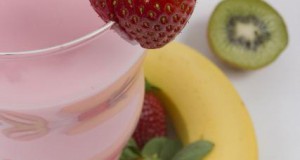
Shakes and smoothies are a great and delicious way to incorporate more fruits and nutrients into your diet. This 2-page fact sheet is a major revision which provides a variety of refreshing and exciting smoothie and shake recipes as well as preparation tips. Written by Jennifer Hillan, Emily Minton, and Linda B. Bobroff, and published by the UF Department of Family, Youth and Community Sciences. Original publication date: March 2004. Revised March 2012 and September 2015.
http://edis.ifas.ufl.edu/fy696
FCS8561/FY057 Healthy Eating: Calcium (1 page)
Revised! FCS-8561, a 1-page illustrated handout by Linda B. Bobroff, uses a question-and-answer format to provide key information for elders about why calcium is important, what foods contain it, good sources of calcium, and how much older adults need. Published by the UF Department of Family Youth and Consumer Sciences, March 2010.
http://edis.ifas.ufl.edu/fy057
FCS8568/FY068 Healthy Eating: Calcium
Revised! FCS8568, a 2-page illustrated handout by Linda B. Bobroff, uses a question-and-answer format to provide key information for elders about what calcium is, what foods contain it, what happens when people do not get enough, and how much older adults need. Includes references. Published by the UF Department of Family Youth and Consumer Sciences, March 2010.
http://edis.ifas.ufl.edu/fy068
FCS8883/FY1127 Healthy Eating: Understanding the Nutrition Facts Label
FCS8883, a 2-page illustrated fact sheet by Karla P. Shelnutt, explains the nutrition facts label — why it is needed and how to read it. Published by the UF Department of Family Youth and Community Sciences, October 2009.
http://edis.ifas.ufl.edu/FY1127
